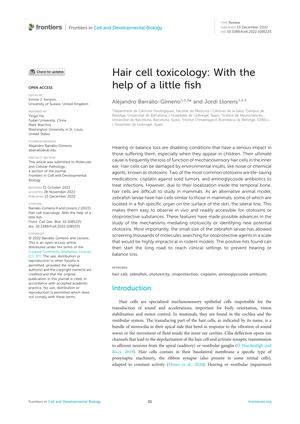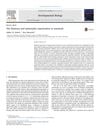Hair Cell Toxicology: With the Help of a Little Fish
December 2022
in “
Frontiers in cell and developmental biology
”

TLDR Zebrafish larvae are used to study and find treatments for ear cell damage because they are easier to observe and test than mammals.
The document discusses the challenges of studying hair cell damage in mammals due to their location within the temporal bone and introduces zebrafish larvae as an alternative model for research. Zebrafish larvae have hair cells similar to mammals, with some on the surface of the skin, making them easily observable and accessible for testing with ototoxins and otoprotective substances. This has led to progress in understanding ototoxicity and screening for protective agents against hair cell damage caused by common ototoxins like cisplatin and aminoglycoside antibiotics. The small size of zebrafish larvae enables large-scale screening of molecules for otoprotective properties, a process that would be impractical with rodent models, with the goal of eventually developing treatments to prevent hearing or balance loss in clinical settings.


